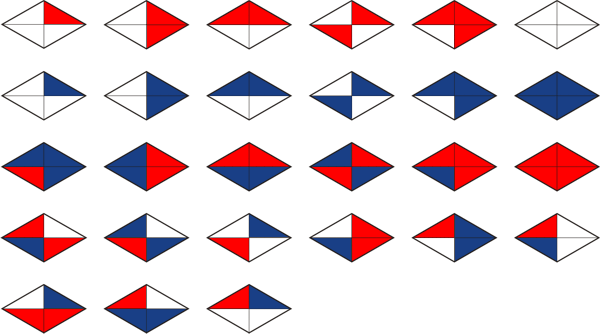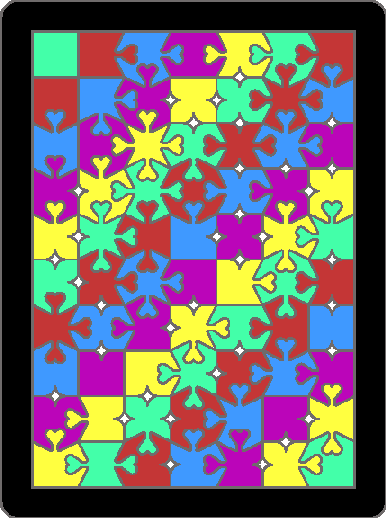Several different puzzles can be made using copies of the same tile with different colourations.
You could simply paint the patterns on 1" tiles, or use individual triangles for the first set and 1/2" squares for the second.
|
|
|

|
 |
|
|
|
|
 |
 |
 |
|
|
||
 |
||
|
|
|
|
 |
 |
 |
More MacMahon Musings
|

|
|
 |